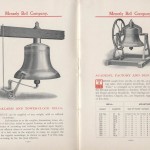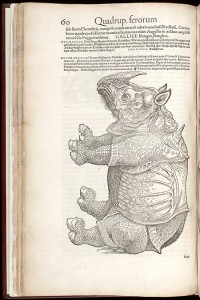 Did you know the 1876 Centennial Bell and the 1893 Columbian Liberty Bell both weighed thirteen thousand pounds? Do you know why? The Trade Literature Collection at the National Museum of American History Library includes a Meneely Bell Co. catalog which answers that question and more.
Did you know the 1876 Centennial Bell and the 1893 Columbian Liberty Bell both weighed thirteen thousand pounds? Do you know why? The Trade Literature Collection at the National Museum of American History Library includes a Meneely Bell Co. catalog which answers that question and more.
Category: homepage

Have you ever been working on a research project with a group of people and wished for a better way to share your work online, or “in the cloud”? Well, a number of tools exist for just this purpose – including the two reference managers I told you about in my last couple of Library Hacks posts. In my final post on these tools, I’ll discuss how both Zotero and Mendeley offer ways to help you collaborate and communicate with colleagues to make sharing research easier. So far, these tools may have seemed pretty similar, but this is where you will see some distinct differences between the two.

What is a full treatment exactly, in book preservation terms? A full treatment entails the dis-binding, washing, drying, re-sewing and re-casing of a book. In the case of Exploration Scientifique de L’Algérie, the book came to us from the Cullman Rare Book Library because it had previously been damaged by water and mold. In order to clean, flatten and remove the mold from the book, we needed to take it apart section by section, page by page.
 Ida Applebroog’s artists’ books have a way of making you feel slightly uncomfortable without really knowing why. At least that is the effect her small books have on me. My first encounter with them had me feeling generally uncertain, thinking not only “What are these things?” but also “Why are these things?” Even after reading several of her books, I still did not understand exactly what her images represented. I had to read about Applebroog’s books to better understand.
Ida Applebroog’s artists’ books have a way of making you feel slightly uncomfortable without really knowing why. At least that is the effect her small books have on me. My first encounter with them had me feeling generally uncertain, thinking not only “What are these things?” but also “Why are these things?” Even after reading several of her books, I still did not understand exactly what her images represented. I had to read about Applebroog’s books to better understand.
 Today, Halloween, is traditionally marked with bats, pumpkins, ghosts and of course, skeletons. In the 1500’s, one man changed the way the medical world saw the skeletal and muscular systems of the human body. That man, Andreas Vesalius, illustrated anatomical features in his De humani corporis fabrica (On the structure of the human body) in a way never before seen. Although the pages below may seem gruesome (fair warning, gentle readers!), they come from one of the most influential anatomy books of all time.
Today, Halloween, is traditionally marked with bats, pumpkins, ghosts and of course, skeletons. In the 1500’s, one man changed the way the medical world saw the skeletal and muscular systems of the human body. That man, Andreas Vesalius, illustrated anatomical features in his De humani corporis fabrica (On the structure of the human body) in a way never before seen. Although the pages below may seem gruesome (fair warning, gentle readers!), they come from one of the most influential anatomy books of all time.

Earth’s biodiversity is under constant threat as loss of habitat leads to the extinction of species. Thousands of species—plants and animals—are disappearing every year, and one of the most endangered is the rhinoceros. The Smithsonian Institution takes part in a global effort dedicated to the survival of endangered species and their habitats, and through its collections and staff, the Smithsonian Libraries participates in this work by supporting and enhancing research in wildlife conservation biology. It has opened the exhibition “Fascinating-Endangered RHINO,” which will be on display from September through April 30, 2013, at the Smithsonian’s National Museum of Natural History.

